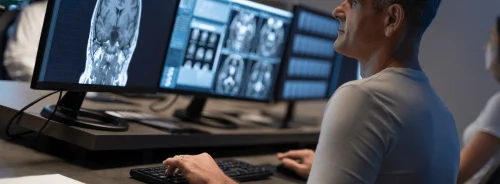More than three-quarters of the nearly 900 FDA-approved medical devices on the market pertain to radiology, encompassing AI tools for image reconstruction, diagnostic support, and administrative automation. This significant emphasis on radiology highlights radiologists' critical role in developing and integrating AI technologies. However, as these tools become more prevalent, radiologists' perceptions and attitudes toward AI are becoming increasingly important in shaping the future of clinical practice.
Radiologists as Partners in AI Development
Radiologists are not merely end users of AI technology but vital partners in its development and implementation. Their involvement in trialling new products, providing feedback, and collaborating on clinical trials ensures that AI tools are effective and relevant in real-world settings. The success of these technologies largely depends on how well they are integrated into existing workflows and the extent to which radiologists feel confident in their use. However, a survey conducted by Cè et al. revealed that many radiologists are unaware of whether AI is being used in their practice. This is a concerning finding, given the potential limitations of current AI algorithms. Addressing this gap in awareness is crucial for ensuring that AI tools are safely and effectively integrated into clinical practice.
Challenges and Barriers to AI Adoption
While AI holds great promise, its integration into radiology is not without challenges. Younger radiologists, though generally more positive about AI, also report feeling threatened by its introduction, primarily due to a lack of understanding of AI’s limitations. Concerns about job replacement and insufficient training further exacerbate these fears. International surveys echo these findings, underscoring the need for better education and training to equip radiologists with the necessary skills to interact with AI tools. As the European Union AI Act mandates AI literacy among users, it is essential to implement training programmes that address these concerns and prepare radiologists for the evolving landscape of their profession.
The Evolving Attitudes Toward AI in Radiology
Radiologists' attitudes toward AI can evolve over time as they gain real-world experience with these technologies. Initial enthusiasm for AI tools can wane as their practical limitations become apparent, particularly when they disrupt established workflows. However, with time, adaptation, and collaboration, radiologists can become more engaged with AI, recognising its potential to enhance their practice. Understanding how these attitudes shift is critical to effectively managing transitions involving new technology and ensuring that AI tools are successfully integrated into clinical practice.
As AI continues to transform radiology, understanding radiologists' perceptions and attitudes is critical for addressing the challenges associated with its integration. Ensuring that radiologists are aware of AI’s limitations and providing them with adequate training are essential steps in maintaining patient safety and compliance with regulatory requirements. By fostering a collaborative approach to AI implementation, radiologists can play a pivotal role in shaping the future of healthcare, ensuring that these technologies benefit both practitioners and patients alike.
Source: European Journal of Radiology
Image Credit: iStock






